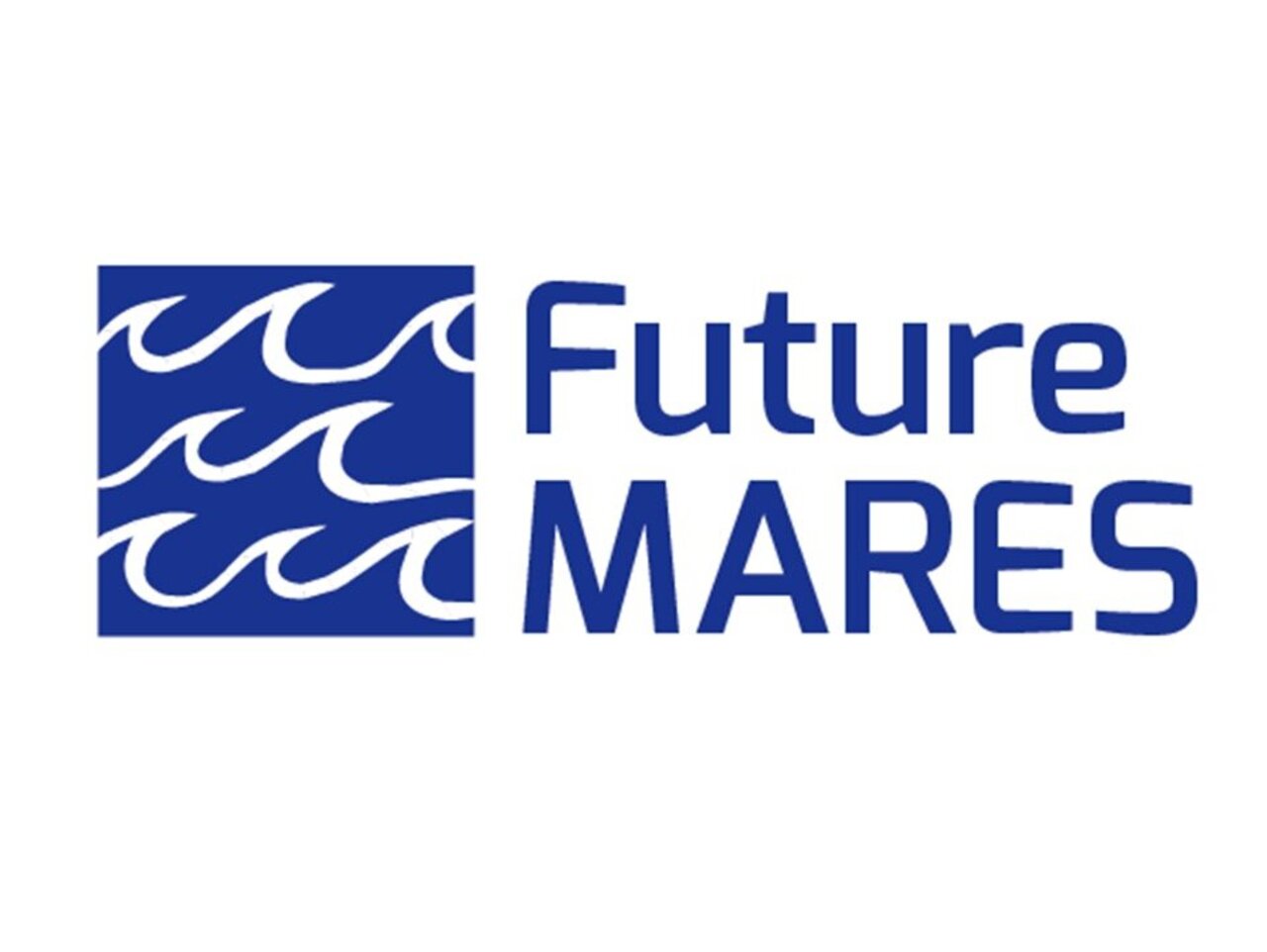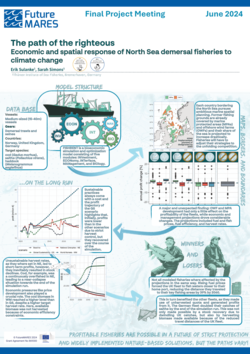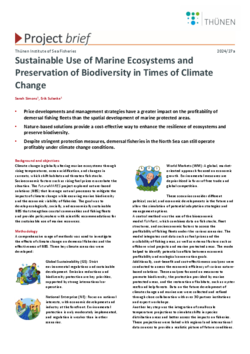Project
Climate Change and Future Marine Ecosystem Services and Biodiversity (FutureMARES)

Climate Change and Future Marine Ecosystem Services and Biodiversity
Climate change has negative impacts on marine ecosystems, biodiversity and ecosystem services. Which adaptation strategies to climate change using nature based solutions are possible, to reduce the negative impacts on marine ecosystems?
Background and Objective
FutureMARES is an EU-funded research project that focused on the complex interactions between climate change, marine biodiversity, and the marine ecosystem services. Leading research organizations, NGOs, and public institutions worldwide collaborated across five case study regions to develop and implement nature-based solutions (NBS). The primary goal: to promote the sustainable use of marine resources and mitigate the impacts of climate change.
Our objective was to develop NBS that are both socially and economically viable. These solutions aim not only to support climate change adaptation but also to safeguard future biodiversity and ecosystem functions. Drawing on scientific findings, we provide policymakers with well-founded recommendations to effectively implement NBS and use the ecosystem services they offer.
Approach
To make realistic predictions and identify potential conflicts of interest, we utilized the established bio-economic model FishRent. In collaboration with international partners and through intensive data research, we integrated the latest scientific climate projections into our simulations.
Key Innovations:
- Integration of Offshore Wind Energy Data: For the first time, we systematically incorporated data on offshore wind energy and marine protected areas into the FishRent model.
- Fine-Scale Temperature Projections: In partnership with models developed at the Thünen Institute, we linked temperature changes with shifts in species distribution to precisely assess the impact on fisheries.
Our Research Questions
The project will especially look at three types of Nature-based Solutions (NBS) to mitigate and adapt to Climate Change in e.g. European waters and other marine and transitional waters.
NBS1:Effective Restoration Strategies of habitat-forming species that can act as ‘climate rescuers’. Targeted habitats include seagrasses, salt marshes, mangroves, kelp forests, coral reefs and shellfish reefs, which can buffer species from negative effects of warming and ocean acidification. These habitats are also key nursery areas supporting biodiversity (including commercially important species), provide natural refuges and feeding grounds, improve seawater quality, reduce coastal erosion and flood risk, function as carbon sinks (regulating climate), and sustain tourism and cultural activities.
NBS2: Effective Conservation Strategies explicitly considering the range of impacts of CC and other hazards on habitat suitability for flora and fauna. Strategies explored include preserving the integrity of food webs and sustaining population connectivity across networks of climate refugia (where biogeophysical conditions are stable or changing slowly22 over multiple spatial and temporal scales (i.e. from site-specific marine protected areas to conservation strategies for highly-migratory charismatic megafauna).
NBS3:Sustainable Harvesting of seafood from fisheries and aquaculture that is flexible, adaptive and managed on a whole ecosystem basis. Ongoing impacts of CC require an ecosystem-based management and multispecies approach23that can adapt to shifts in species’ productivity, distribution and interactions24. High-level EU policy advisors have highlighted culture and capture at lower trophic levels as critical for sustainable seafood production25 (linking with NBS1). Strategies must also account for potential trade-offs among multiple users, economic sectors and the ecosystem services such as cultural heritage for effective Blue Growth linking with spatial planning in NBS2. Therefore, the three NBSs do not act in isolation but rather exert synergetic positive effects.
The main research question for the Thünen-Institute will be the sustainable harvesting of living marine resources in the North Sea taking restoration and conservation strategies into account (e.g. select best suitable habitats to improve preservation of habitats and stocks under climate change impacts).
 Poster Final Meeting FUTUREMARES The path of the righteous: Economic and spatial response of North Sea demersal fisheries to climate change
19 MB
Poster Final Meeting FUTUREMARES The path of the righteous: Economic and spatial response of North Sea demersal fisheries to climate change
19 MB
Results
Using the bio-economic model FishRent, we simulated the impact of NBS in the North Sea region and tested their effectiveness under various climate scenarios. A particular focus was placed on the socio-economic consequences of climate change, such as rising fuel prices and evolving management strategies.
Key Findings:
- Profitability Despite Challenges: Our research indicates that North Sea demersal fisheries can remain economically viable even under strict conservation measures and increased use of renewable offshore energy.
- Regional Variations: Profitability, however, varies significantly by region, depending on the location of fishing grounds and the cost structure of the fleet.
DOI: 10.3220/PB1731916894000
 Project brief: FUTUREMARESSarah Simons, Erik Sulanke (Project brief: 2024/27a): Sustainable Use of Marine Ecosystems and Preservation of Biodiversity in Times of Climate Change
334 KB
Project brief: FUTUREMARESSarah Simons, Erik Sulanke (Project brief: 2024/27a): Sustainable Use of Marine Ecosystems and Preservation of Biodiversity in Times of Climate Change
334 KB
Links and Downloads
Watch the FutureMARES synthesis video! What are the main results of FutureMARES? What impact does our project have on politics? Find out in our video.
Thünen-Contact

Publications
- 0
Sulanke E, Rubel V, Berkenhagen J, Bernreuther M, Stoeck T, Simons SL (2025) Amending the European fishing fleet segmentation based on machine learning and multivariate statistics. Fish Res 281:107190, DOI:10.1016/j.fishres.2024.107190
- 1
Chen W, Ruiz-Frau A, Simons SL, Koch SJI, van den Burg S, Rilov G, Teng X, Zhao Q, Zhang P, Renaud PE, Bellerby RGJ, Yakushev E, Teien KT, White LT (2024) Coastal management: Adaptation and resilience of coastal ecosystems to environmental change. In: Baird D, Elliott M (eds) Treatise on estuarine and coastal science. 2nd ed. Academic Press, pp 695-715, DOI:10.1016/B978-0-323-90798-9.00067-6
- 2
Di Cintio A, Sulanke E, Di Genio S, Niccolini F, Sbragaglia V, Visintin F, Bulleri F (2024) Investigating artisanal fishers' support for MPAs: Evidence from the Tuscan Archipelago (Mediterranean Sea). Mar Policy 167:106260, DOI:10.1016/j.marpol.2024.106260
- 3
Simons SL, Sulanke E (2024) Nachhaltige Nutzung von Meeresökosystemen und Erhalt der Biodiversität in Zeiten des Klimawandels. Bremerhaven: Thünen-Institut für Seefischerei, 2 p, Project Brief Thünen Inst 2024/27, DOI:10.3220/PB1731916894000
- 4
Simons SL, Sulanke E (2024) Sustainable Use of Marine Ecosystems and Preservation of Biodiversity in Times of Climate Change. Bremerhaven: Thünen Institute of Sea Fisheries, 2 p, Project Brief Thünen Inst 2024/27a, DOI:10.3220/PB1731917229000
- 5
Sulanke E, Simons SL (2024) The path of the righteous : Economic and spacial response of North Sea demersal fisheries to climate change [Poster presented at the FutureMARES Final Project Meeting].
- 6
Di Cintio A, Sulanke E, Di Genio S, Niccolini F, Sbragaglia V, Visintin F, Bulleri F (2023) A socio-economic characterization of Tuscan Archipelago's artisanal fisheries: status quo, challenges and new business opportunities. Reg Studies Mar Sci 68:103275, DOI:10.1016/j.rsma.2023.103275
- 7
Sulanke E, Simons SL (2023) How will climate change affect the demersal fisheries of the North Sea? : Using a bio-economic model to predict climate-induced changes in fisheries profitability and identify pathways to nature-inclusive harvesting strategies [Poster]. Bremerhaven: Thünen Institute of Sea Fisheries
Involved external Thünen-Partners
-
Universität Hamburg
(Hamburg, Deutschland) - Aarhus University
(Aarhus, Tjele, Dänemark) -
Aristotle University of Thessaloniki / ARISTOTELIO PANEPISTIMIO THESSALONIKIS
( Thessaloniki, Griechenland) - AZTI-Tecnalia (Marine and Food Technological Centre. The Marine Research Division) / Fundación AZTI
(Bilbao, Sukarrieta, Spanien) - CEFAS (Centre for Environment, Fisheries & Aquaculture Science)
(Lowestoft, Großbritannien (inkl. Nordirland)) -
CIIMAR
(Porto, Portugal) - Agencia Estatal Consejo Superior de Investigaciones Científicas (CSIC)
(Madrid, Cordoba, Spanien) - Deltares
(Delft, Niederlande) - Danish Technical University (DTU)
(Kopenhagen, Hirtshals, Charlottenlund, Dänemark) - GEOMAR - Helmholtz Zentrum für Ozeanforschung Kiel
(Kiel, Deutschland) - Hellenic Centre for Marine Research (HCMR)
(Anavisso, Griechenland) - Israel Oceanographic and Limnological Research Limited (IOLR)
(Haifa, Israel) - Institut de recherche pour le developpement (IRD)
( Marseille, Nouméa (Neukaledonien), Frankreich) - Plymouth Marine Laboratory (PML)
(Plymouth, Großbritannien (inkl. Nordirland)) - Wageningen University & Research (WUR)
(Wageningen, Niederlande) -
Universidad de Vigo
(Vigo, Spanien) - Universita di Pisa (UPISA)
(Pisa, Italien)
Funding Body
-
European Union (EU)
(international, öffentlich)
Duration
9.2020 - 8.2024
More Information
Project funding number: Grant Agreement number: 869300
Project status:
finished

![[Translate to English:] [Translate to English:]](/media/_processed_/7/1/csm_IMG_7977_large_1defaf5de1.jpg)






